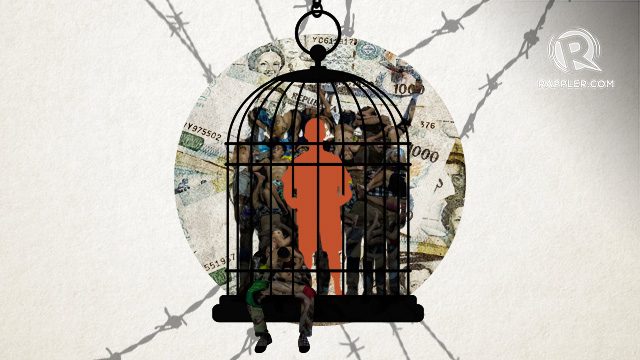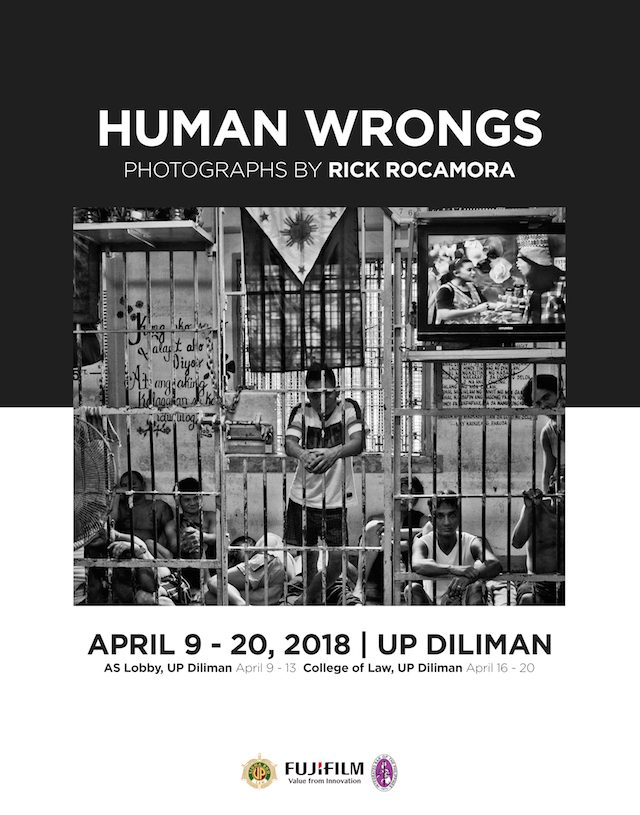SUMMARY
This is AI generated summarization, which may have errors. For context, always refer to the full article.


In the Supreme Court decision of Allado v. Diokno, the SC pronounced that, “[t] he sovereign power has the inherent right to protect itself and its people from vicious acts which endanger the proper administration of justice; […] This is essential for its self-preservation[.]”
With such principle animating the Philippine criminal justice system, one must dare ask – at what price does self-preservation come?
The superficial answer to that query is: around P165 billion each year. Such figure, drawing from the yearly budget, is what Filipino taxpayers expend for the operations of government instrumentalities tasked with implementing the justice system. These agencies are the: Office of the Secretary, Department of Justice; Office of the Solicitor General; National Police Commission; the Philippine National Police; Bureau of Corrections; Bureau of Jail Management and Penology (BJMP); National Bureau of Investigation; Public Attorney’s Office; and Parole and Pardon Administration.
But P165 billion is a grave underestimation of the true price of administering the justice system; omitted in this accounting are the social costs borne by jail congestion.
Latest official figures, released by the BJMP around July 2017, show that 143,367 inmates are housed in 466 jails – facilities where only a total of 20,773 individuals can be accommodated. This means that where only one inmate should be confined, there are, in fact, 7 of them. Such figures should have been aggravated by now, considering that President Rodrigo Duterte has not called a ceasefire in his war on drugs and compounded, all the more, by the laggard pace of the judicial process.
These numbers produce negative consequences.
Prison overcrowding diminishes work productivity, thereby hindering economic growth. Without a doubt, human capital is a nation’s most vital resource; but every day spent behind bars is a foregone opportunity for able-bodied individuals to put in productive work.
Concededly, detainees are, for good measure, removed from society to secure others’ lives and property. Yet the same BJMP statistics show that around 97% of such detainees are actually awaiting trial, undergoing trial, or awaiting final judgment – individuals who, at least in the eyes of the law, are still considered innocent but for some reason or another, are unable to secure their provisional liberty; these are individuals who could be putting food on the table, but must instead endure the cramped spaces of the jails.
Lamentably, criminal procedure as presently crafted, subverts, rather than promotes, the right to secure provisional liberty. Such procedure is more a function of financial capacity rather than of other more pressing considerations such as flight risk, gravity of the crime charged, or the amount of evidence on record.
Moreover, jail overcrowding hurts work productivity by debilitating our human capital. Too many individuals crammed into one cell, having little to no ventilation, provided with dismal hygiene facilities, and fed with poor quality food spell health issues. One might wonder how authorities act with such perverse incentives – that is, whether it is more rational to provide inmates with medical treatment (and keep up the number of detainees) or let their sicknesses take over (and clear some “additional space” for incoming detainees).
Exacerbating physical deterioration are emotional and mental degradation – what with the seemingly endless days spent contemplating one’s uncertain fate; the abuse received at the hands of inhumane prison guards and co-inmates; or the emotional trauma of being separated from one’s family.
Sadly, BJMP statistics show that 94% of such detainees consist of individuals between the ages of 18 and 53, the age bracket which is the prime of one’s productive life. One wonders whether after enduring such prison ordeals, even if eventually acquitted, such individuals are still in full physical, mental, and emotional capacity to participate in society.
Jail congestion also saps the family, as a fundamental social unit, of its vitality. Constitutionally, the State vows to “protect and strengthen the family as a basic autonomous social institution” as well as to “strengthen its solidarity and actively promote its total development.”
And yet, authorities lock away numerous parents, unable to help their children with homework or inculcate in them important life lessons. One must obviate the social stigma that individuals accused of crime cannot make good parents. Marital intimacy is replaced by uncomfortably overlapping limbs, moist from sweat, and resting atop cardboard strips as makeshift mattresses. Moreover, we see Christmases being spent either at home, but with an absent family member, or complete, but in the squalid detention facilities.
Perniciously, overcrowding also impairs our Constitutionally enshrined liberties. Opening the Bill of Rights, “[n]o person shall be deprived of life, liberty, or property without due process of law,” and related thereto, “[i]n all criminal prosecutions, the accused shall be presumed innocent until the contrary is proved[.]”
More than serving as a procedural device, the presumption of innocence reflects the State’s attitude towards individuals accused of crime: that they stand in the same footing as persons who are, in truth and in fact, innocent. From this policy stance flows other related rights such as the right to bail, the right to counsel, the right to speedy trial, among others.
But jail overcrowding constitutes premature punishment since inmates, committed pending final judgment, are already subjected to unforgiving conditions. The only difference between imprisonment pre-conviction and post-conviction is a heap of paper called a final judgment. Even if they are eventually acquitted, they would have already lost a great deal of their life, liberty, or property – a huge chunk of their lives that they can no longer return to. As earlier adverted to, around 97% of detainees are rotting in jail even if they are still Constitutionally presumed innocent.
Factoring in the social costs of jail congestion, the price of criminal justice goes well beyond P165 billion – these are inestimable costs that no amount of pecuniary disbursement can ever recompense. Jails keep the possibly guilty away from society; but once the jail cells have emaciated every pound of the inmates’ flesh, stripped them away of their privacy and dignity, and broken their spirit, can we truly say that the criminal justice system has attained the goal of self-preservation?

What can be done to address these issues?
First, critical examination is necessary and advocacy groups play a pivotal role therefor. For instance, the Karapatan ng Komunidad sa Loob ng Selda (Kakosa), a fledgling organization formed by students of the UP College of Law, is a prison-service organization that seeks to inform and uphold the dignity and rights of prisoners.
The UP Sigma Rho Fraternity, Fujifilm, and the Integrated Bar of the Philippines will exhibit award-winning journalist Rick Rocamora’s documentary photography of detention centers. Such exhibit will run from April 9 to 13 at UP Diliman’s College of Arts and Sciences, and April 16 to 20 at the College of Law. Veteran lawyers from the Free Legal Assistance Group (FLAG) could lead discussions on their clients’ dispositions.
Second, after having gained understanding of the issues that plague detention centers, the public must engage the relevant government bodies. The public can urge the legislature to allocate spending for better jail facilities; the judicial branch can review its rules of criminal procedure to democratize bail and recognizance, as well as to widen procedural bottlenecks for more expedient trial; the executive, on the other hand, can hasten its review of pardons and paroles.
Ultimately, it is up to authorities to craft the proper policies that will address the above issues. The public must, however, remain vigilant and participative so that the government produces true and genuine reform.
This way, the criminal justice system can evolve into one that will be more solicitous of the conditions of detainees; one that will truly reflect the State’s policy of self-preservation. Because then, we would have maintained not only the physical, mental, and moral well-being of our inmates, but more importantly, we will have preserved our values as a nation. – Rappler.com
Jose Maria Marella graduated Summa Cum Laude from UP School of Economics and is currently on his fourth year at the UP College of Law.
Add a comment
How does this make you feel?
There are no comments yet. Add your comment to start the conversation.